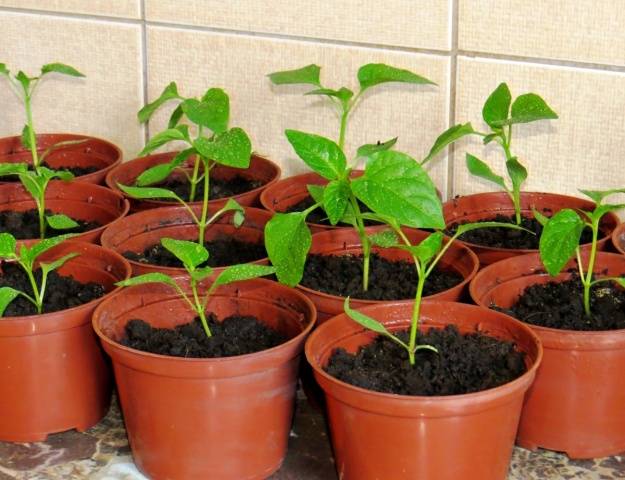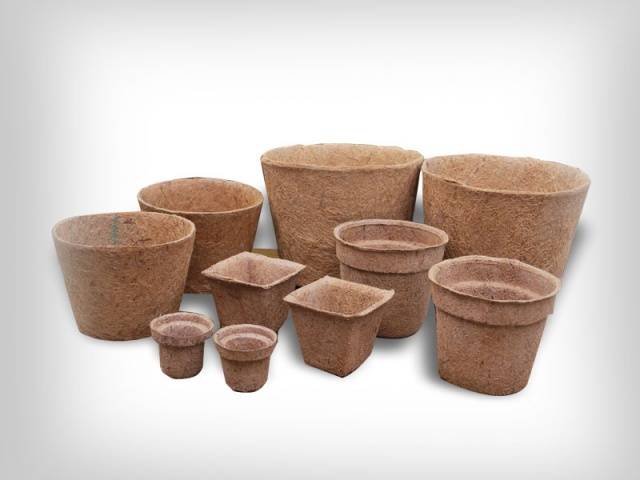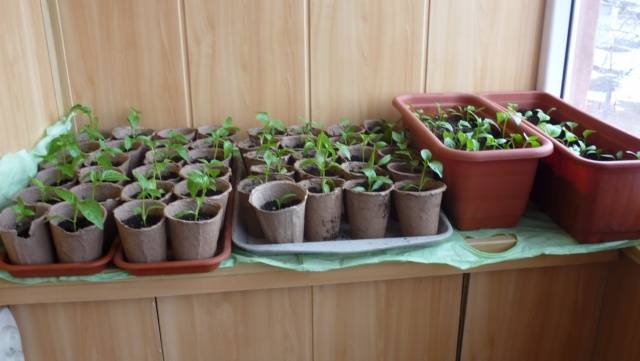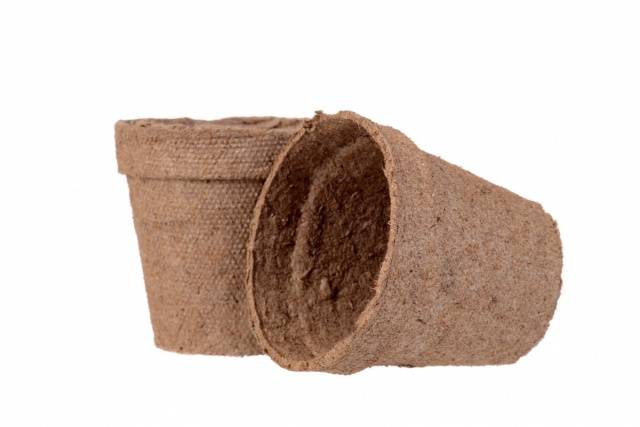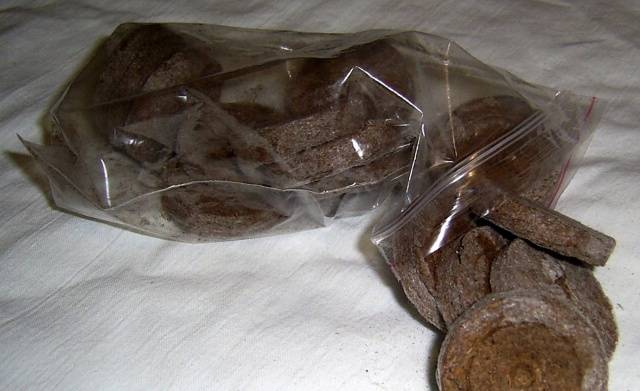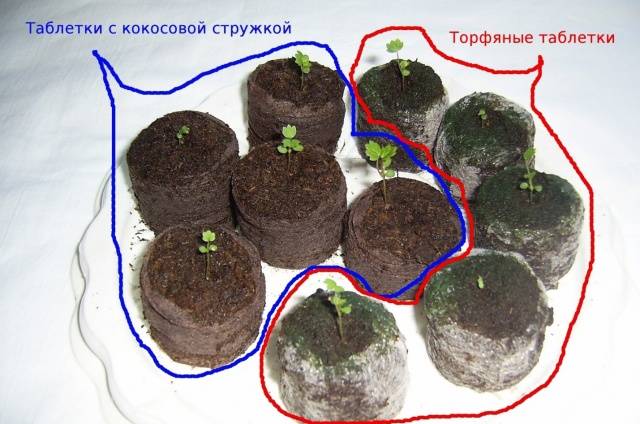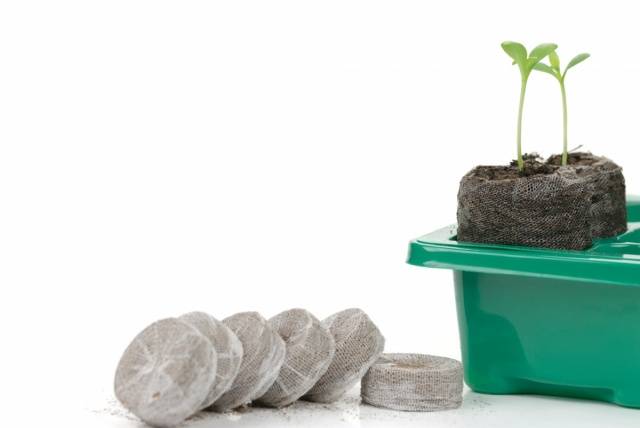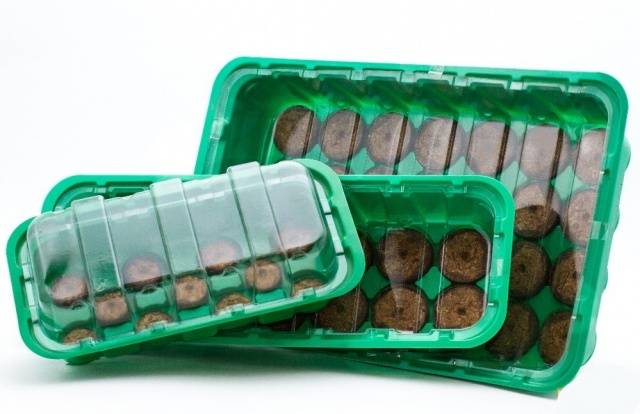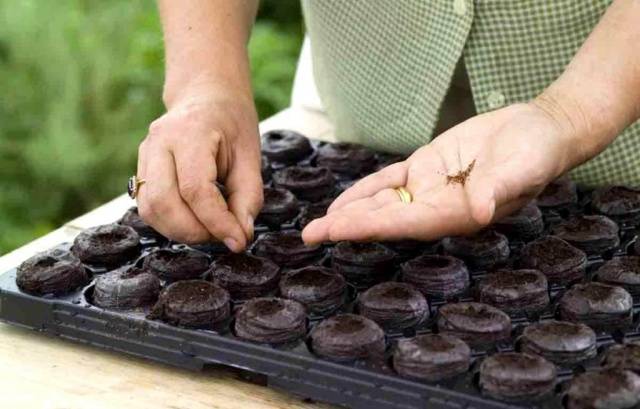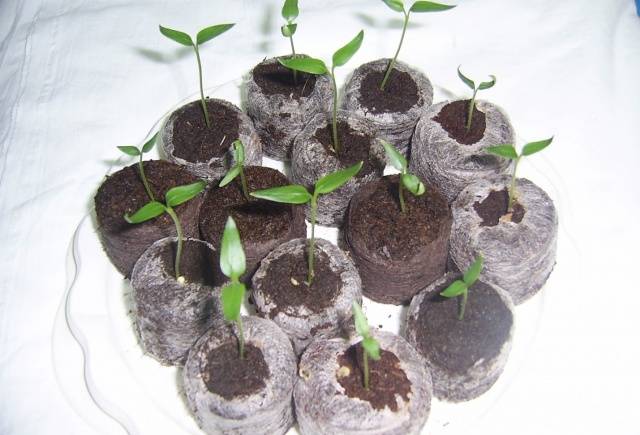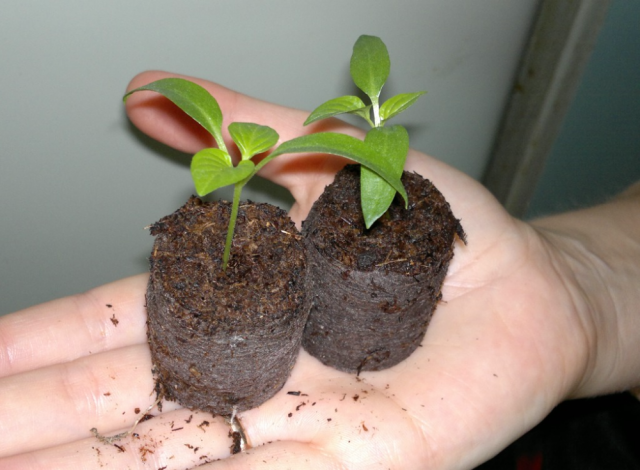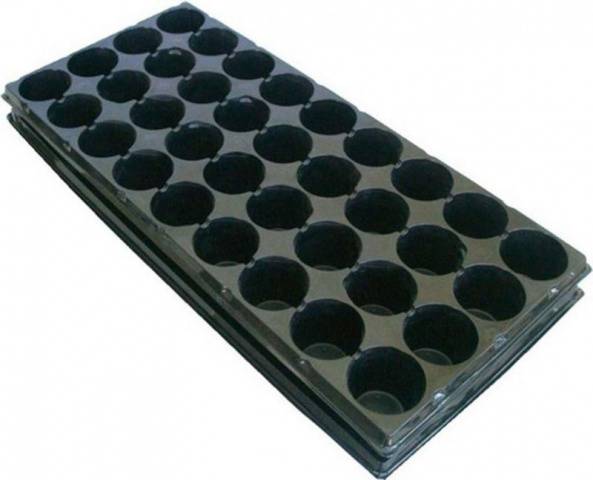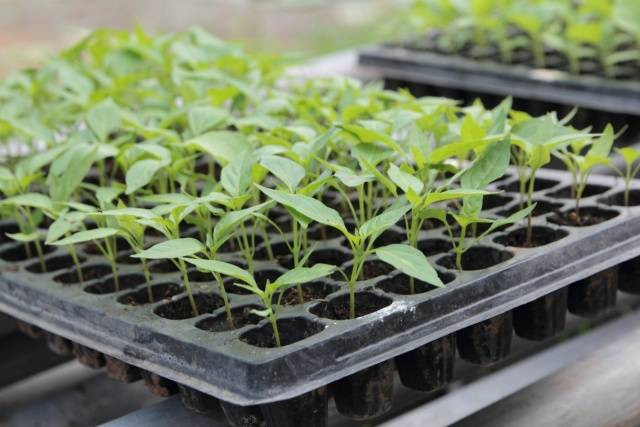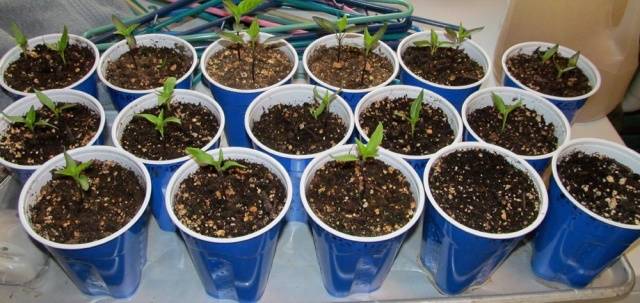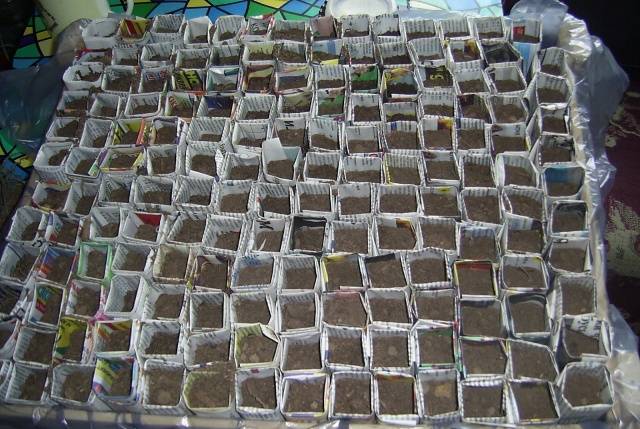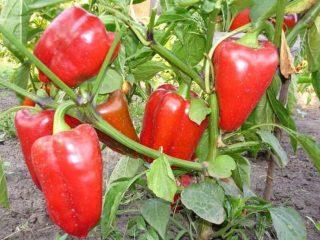Content
Sweet peppers (and hot peppers too) in all climatic regions of our country can be grown only with the help of seedlings. Although it is precisely the sharp varieties in the very south of Russia that can be grown by direct sowing of seeds in priming... Many novice gardeners, first encountering problems growing pepper seedlings, are somewhat lost from the abundance of products designed to help in such a difficult matter. First of all, this concerns the choice of containers in which these seedlings will be grown.
Peat pots and tablets - what is it
The first thing that beginners get to know when trying to delve into the rather complicated process of choosing where, how and in what peppers can be grown is the existence of peat pots and tablets. At the moment, they are sold in every specialized garden store, actively offered and advertised on the Internet and in the markets. Moreover, growing pepper seedlings in peat tablets is a real guarantee that the plants will not die in the first stages of their existence.
What are the pros and cons of this technology?
Peat tanks
Peat pots have appeared on the market for horticultural products for a long time, but opinions about the effectiveness of their use are very different. They can have a wide variety of shapes (round, square) and sizes, sold individually or in blocks, and even in the form of ready-made cassettes. The wall thickness can also vary from 1.5 to 2.5 mm.
Peat pots have many undeniable advantages:
- They are made from environmentally friendly material - peat, respectively, do not contain harmful chemicals and bacteria;
- The porous, breathable wall material allows the roots to breathe and develop well;
- Easy to use - no need to wash, disinfect, make additional holes for drainage;
- Finally, the most important thing, when transplanting, there is a minimal risk of injuring the delicate roots of the pepper, since the plant, along with the pot, is simply placed in the next largest container or immediately into the soil of the future garden;
- As a consequence of the above argument, pepper seedlings do not get stress, they take root faster and give an earlier and plentiful harvest.
With all this, many summer residents and gardeners who tried to plant peppers for seedlings in peat pots were not very happy with the result. Moreover, some enthusiasts even carried out a series of experiments on growing half of the pepper seedlings in ordinary plastic pots, and half in peat pots. And the part that was grown in peat pots looked and developed worse. Why could this happen?
First of all, it should be noted that in recent years, many manufacturers have been making peat pots from pressed cardboard. And such products can no longer compare with their properties with peat.
In addition, in peat containers, the soil, on the one hand, dries out much faster, and on the other hand, the pots themselves, having a tendency to get wet, can become moldy.Thus, when planting peppers in peat dishes, it is necessary to constantly monitor the level of soil moisture, which can be a problem when busy with other things and lack of time.
Peat tablets
Peat tablets are cylindrical discs pressed from various types of peat, enriched with trace elements and growth stimulants. Outside, each tablet is covered with the finest paper mesh impregnated with antibacterial drugs. It helps protect seeds from infection and retain their shape when hydrated.
Thus, a peat tablet is both a container for the growth of seedlings and a ready-made sterile soil mixture, and even with various additives useful for plants. An important positive point, as in the case of peat pots, is that there is no stress on the roots when replanting pepper seedlings. Using peat tablets is also very simple and saves a lot of time.
But when planting especially valuable varieties of peppers or when growing a small amount of seedlings for a family, the use of peat tablets is more than justified. Moreover, pepper belongs to crops that are rather painful for transplanting and picking, and the use of peat tablets will reduce this stress to nothing.
Growing in peat tablets
To begin with, when choosing tablets, you need to carefully study the information on the packaging and choose those made from low acidity peat. Do not take peat tablets without packaging, or even more so without protective nets.
Peat tablets come in different sizes - from 24 to 44 mm, sometimes there are also large sizes - 70 and 90 mm.
Which one to use for planting peppers depends in part on your financial capabilities and desire to make your life easier. If you want to save money, you can take initially 33 mm peat tablets, grow pepper seedlings up to the third or fourth leaf in them without any problems, and then, together with the tablet, move the plants into large containers.
You can also do this - initially plant pepper seeds in peat tablets, 70 or 90 mm in size. If you are going to plant pepper seedlings in a greenhouse, then in these tablets they will live remarkably well until they are planted in the ground. For planting in open ground, it will most likely require another transfer to a larger pot, but this is the ideal case. Most often it happens that there is simply not enough space in the house to accommodate such voluminous pots.
Naturally, the larger the diameter of the peat pellet, the higher its price. And significantly. So the choice is yours.
Landing technology
The timing of sowing seeds in peat tablets can be shifted by a week or two to a later time, due to the lack of picking, and the associated delay in the growth of pepper seedlings.
To plant pepper seeds in peat tablets, it is not even necessary to soak and germinate them. But if you have a lot of time and want to experiment, then, of course, you can do the whole standard set of work to prepare seeds for sowing.
Then you need to take some deep and voluminous container (plastic boxes from under cakes or other culinary products are often used) and put peat tablets in it so that the small indentations are on top. Recently, special cassettes for the size of tablets with trays and suitable lids have appeared on the market.Such kits make life even easier and initially create ideal greenhouse conditions for seed germination.
The surface of the peat tablets is moistened gradually over 20-30 minutes. You can use ordinary settled warm water, or you can add Baikal EM or Zircon of your choice to it to further increase the seed germination energy. The tablets will swell and gradually grow several times, but their diameter will remain almost the same. Excess water must be carefully drained.
Usually peat tablets already have small holes in the center, it is advisable to deepen them a little, literally by half a centimeter, with some blunt object. The prepared pepper seeds are laid out one at a time in these holes and covered with a small amount of peat to level the surface of the soil. If you did not germinate the seeds in advance, then you can place two seeds in one hole, so that later, if both germinate, the weaker ones are carefully cut off at the substrate level.
It is not necessary to water the crops at this stage, the moisture of the tablets is more than enough. The sown seeds are covered with a transparent lid to create a greenhouse effect and placed in a warm place (+ 23 ° C - + 25 ° C). The lid must be opened every day to ventilate and wipe off the condensation that has accumulated on it.
Pepper shoots usually appear in 7-12 days. After the first sprouts appear, the lid must be removed, and the pallet with peat tablets itself must be placed in a bright place. However, this can be done in advance so as not to miss the moment of seed germination. The main thing is that the tray with pepper seedlings does not stand in the sun, otherwise the seeds run the risk of boiling.
Another advantage of using peat tablets is the fact that seedlings may appear unevenly, and during the growth process, small peppers can be easily grouped according to the degree of development, moving them to different trays.
Further pepper seedling care is reduced only to the control of peat moisture and watering. It can be easily carried out by pouring a little water into the pan - the tablets themselves will draw in as much liquid as they need. It is easy to determine the watering time by the state of the tablets - they begin to shrink slightly. If you have poured in too much water, it is best to drain off the excess after a while so that the roots can breathe freely. There is no need to feed the seedlings - everything you need is already in the tablets.
If roots began to appear from the bottom of the peat tablets, then the period of development of pepper seedlings in them has come to an end and it must be moved together with the tablets into a large container.
Variety of containers
Well, what if you grow pepper seedlings in large volumes (more than 100 bushes) for yourself and your relatives or for sale? Or you don't have extra funds to buy pills, but you have extra time to tinker with the seedlings. In these cases, the choice of container for pepper seedlings remains very wide. The only thing to remember, especially if you are a novice gardener, is that pepper really does not like the anxiety of the root system, so it is better to immediately plant it in separate, albeit small, containers.
Plastic cassettes
The ideal option in this case would be plastic cassettes. They are currently available on the market in a variety of sizes, both in the planting cells themselves and in the number of cells in the cassette. In addition, they are easy to cut, which means that you can easily adjust their dimensions to suit your needs. Each cell is perforated, which favorably affects the ventilation of the roots.
Thus, seedling cassettes have many advantages:
- They are durable in operation - with careful use - more than 10 years;
- They are lightweight and compact and can be stacked;
- They are inexpensive and affordable;
- Seedlings are easily transported in them;
- Seedlings are quite easily removed from the cells with slight pressure from below, an earthen lump is preserved, due to which it is easier to take root.
For pepper, the following options are possible:
- use for sowing cassettes with small cells (40x40, 50x50) with further transplanting-transshipment of pepper seedlings into larger ones;
- planting seeds directly into cassettes with large cells (75x75 or even 90x90) and growing seedlings in them before planting in the ground.
Which option to choose is up to you. In the latter case, you just need to be very careful with watering in the first month of growth of pepper seedlings, since in large containers there is a possibility of soil acidification. It is better to water little by little, but often.
In any case, as mentioned above, in order to grow ideal pepper seedlings, three weeks before planting in open ground, the plants must be planted in even larger pots, more than one liter in volume.
Cassettes are often sold separately, without pallets, and if you want to save money on buying them, you can easily make pallets yourself. To do this, cut out a sheet of dense polyethylene, each side of which should be 5 cm larger than the same side of the prepared cassette. Then place the cassette in the center of the sheet and fold all the edges up. Fasten them with a stapler or tape. Carefully trim off the excess. The pallet is ready.
Disposable tableware
The easiest option is to use ordinary disposable cups.
For the initial sowing of seeds, even small cups with a volume of 100-150 ml are suitable. But after 3-4 leaves unfold on the seedlings, it is imperative to transfer each plant into larger seedling cups, with a volume of about 500 ml. If there is extra space on the windowsill, you can immediately take containers of one liter or more for transshipment.
Homemade containers
For growing pepper seedlings, you can use almost any cardboard containers for juices and dairy products. It is only necessary to thoroughly wash them before use, cut and pierce many drainage holes with an awl. The convenience of such containers for growing pepper seedlings is that, before planting in the ground, the cardboard is simply cut and the earthen lump remains intact.
Often, homemade cups are made of dark polyethylene, paper, or even newspaper for growing pepper seedlings in large quantities. The technology is very simple. First there is a wooden or plastic fruit crate. Then a base is taken, which is wrapped in paper or polyethylene of the desired height. As a base, you can take a large plastic bottle or, even better, a piece of metal square profile. After one turn, all unnecessary is cut off, the parts are fastened with tape, and the bottom is bent inward. The finished cups are filled with fertile soil and placed in a box for stability. When landing in the ground, it is enough to simply cut them on one side.
Conclusion
As you can see, the choice of containers in which you can grow strong and healthy pepper seedlings is very extensive. It all depends only on your capabilities and desires.
